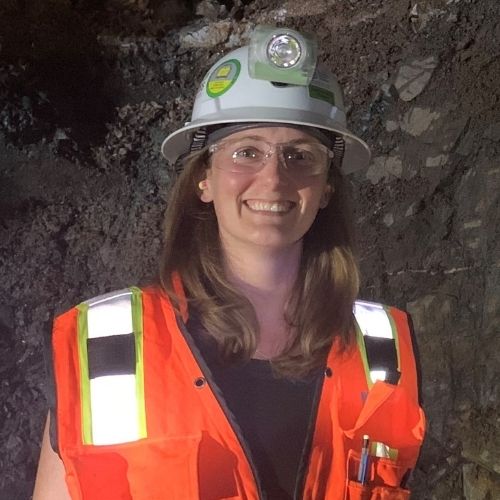What do you do in the underground construction industry, and how long have you been in the industry?
I am currently the design project manager for the Mountain Tunnel Improvements Project for the San Francisco Public Utilities Commission. I’ve been super lucky to have a really wide-ranging career, as I try to approach every opportunity with a “yes.” I have been a structural engineer and on-site engineer at Paddington Station in London, was the owner’s representative for a CSO EPB (combined sewer overflow, earth pressure balance) project, led a team for three design-build packages for SEM (sequential excavation method) transit tunnels in Australia, and am currently working on a drill-and-blast water tunnel in construction. Each project brings its own fun challenges, and this industry has kept me entertained for 13 years.
How did you get into the industry, and why did you decide to pursue it as a career?
I started my career working on an enabling works package at Paddington Station in London for Crossrail. I completed structural design elements for a new entrance and new taxi facility to Paddington Station. The site was tightly constrained because Paddington Station sits above various tunnels built in the 1920s. We drove a pile into an unknown and abandoned Royal Mail tunnel and had to design a repair for it. Fun fact: a portion of these tunnels are now opened up as a museum with a train ride included! After Paddington, I knew that I wanted to continue working in the underground field. When I moved to Washington, DC, I joined McMillen Jacobs Associates as the owner’s representative for the Anacostia River Tunnel, part of the DC Clean Rivers program.
What is it like to work as an engineer on underground projects?
Fun, intense, FUN! No project is the same, and the ground conditions are different from project to project. There are so many challenging issues to resolve that every day is different even when on a longer-duration project. Working on a construction project or design-build project is fast-paced and turnaround times are tight, but you actually get to see it being built before your eyes! Feasibility studies and design-bid-build projects are also super interesting as you get to understand the client’s needs in depth and assist in designing a solution that best suits their individual needs.
What professional achievements have defined you and made you proud?
Two achievements stand out – my first time leading a team was working on a design-build project in Australia. My team delivered three design-build packages in six months with 140 drawings. It was a steep but fun learning curve where I got to work with a great team and the contractor to find the best solutions. I learned a ton, and as an added bonus, after a lot of remote work, I got to deliver the packages in person to the client.
The second occurred this past February when I had the opportunity to rappel down an 80-ft inclined shaft into a tunnel underneath the Tuolumne River to perform an inspection and geological mapping. I am not a recreational climber as I have a fear of heights. On my first rappel down that shaft I was hanging on for dear life. But I had a great team surrounding me and by the fifth time it was like riding a bike.
What are some of the biggest challenges you have faced, and how have they been meaningful?
Every party on a project – owner, designer, contractor, supplier – seems to have a different goal in mind. Working to find a solution and a path forward on each issue is a constant challenge to make sure that everyone feels heard and understood while working toward delivering a quality product that is on budget and on time. When you do find a solution that works for all parties and moves the project forward, it is a great feeling.
What do you hope the future holds for yourself and for the industry?
My hope is that the entire industry grows to include an increased breadth of perspectives, which would help us better solve the problems we work on. I’ve worked with people of all ages from all over the world with many different backgrounds and all of our unique stories mean that every single person brings something unique to the work. For example, since becoming a mom I am super proud that my kids know I go to a construction site for work. However, days in the field are long, and it makes it tricky to find that balance between being physically present to watch my children grow up (especially at a young age) while enjoying a super interesting career. I would encourage the industry to think outside the box and be welcoming of people from all different backgrounds and stages in their lives, and use those perspectives as an asset to inform the way we design and work as well as enriching the working environment.
What is your advice to a student looking to enter the field?
Look around your local city or research a project that is going on and reach out for a site visit. Talk to the folks there and see if you can get an internship. Spend time out in the field, watch, and ask questions. Talk to everyone – the safety managers, operators, drillers, other engineers, technicians – they all have a story and experience that you can learn from. I will repeat it again: TALK TO EVERYONE. You learn so much faster and have concrete experience (sorry for the pun) to draw on later. The day flies by, and you feel more satisfied in your work when you know something about all the people connected to your job.
What led you to join UCA?
I joined UCA because they offer great conferences and resources, and bring underground professionals together. The buzz, excitement and networking at the Rapid Excavation and Tunneling Conference (RETC) and North American Tunneling Conference (NAT) are unmatched.

